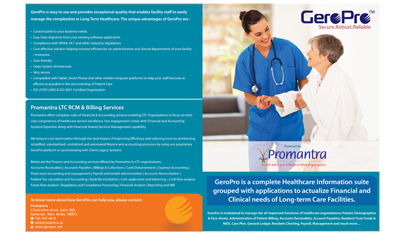Investing in Skilled Nursing Facilities in 2025

The healthcare sector has always been resilient, but Skilled Nursing Facilities (SNFs) stand out in 2025 as one of the most compelling---and misunderstood---investment opportunities. With an aging U.S. population, growing demand for post-acute care, and evolving reimbursement models, SNFs are positioned at the intersection of healthcare necessity and long-term financial growth. Understanding the healthcare revenue cycle is crucial for investors looking to capitalize on this opportunity.
But before diving in, investors must understand the realities, risks, and rewards that make SNFs both promising and complex, particularly in terms of revenue cycle management and healthcare finances.
Why SNFs Are Attracting Investor Attention in 2025
- Demographic Tailwinds: By 2030, all Baby Boomers will be over 65, with the 85+ population segment---those most likely to need skilled nursing---growing the fastest. This translates to sustained demand for high-quality nursing care and an increased focus on efficient revenue cycle operations.
- Healthcare Spending Growth: The U.S. is projected to spend nearly $7 trillion on healthcare by 2031 (CMS data), with long-term care being a major driver. Investors recognize that SNFs are part of this growth engine, necessitating robust revenue cycle management practices.
- Shifts in Post-Acute Care: Hospitals are discharging patients earlier, increasing the demand for short-stay, rehabilitation-focused SNFs. This positions facilities with strong clinical outcomes and efficient billing and collections processes as highly valuable.
Challenges Investors Must Weigh
While the upside is clear, investing in SNFs isn't without risk, particularly in the realm of revenue cycle management.
- Regulatory Pressure: SNFs are highly regulated, with compliance costs eating into margins. This includes adherence to strict billing practices and medical coding standards.
- Labor Costs: Workforce shortages and rising wages can strain profitability, impacting various revenue cycle departments.
- Reimbursement Complexity: Medicare, Medicaid, and private insurers all play a role, and delayed or denied payments can hit cash flow hard. Effective claims management and denial management are crucial.
- Public Perception: Post-pandemic, reputational risk and scrutiny around quality of care are higher than ever, emphasizing the need for transparent billing processes and a positive patient financial experience.
These factors mean operational expertise is just as important as financial capital, especially in managing the healthcare revenue cycle.
What Makes a Skilled Nursing Facility Investment Successful?
The most successful SNF investments in 2025 will hinge on three factors:
- Operational Efficiency: Facilities with streamlined billing and collections, efficient claims processing, and robust financial management maintain healthier margins. This includes optimizing the entire revenue cycle workflow, from patient registration to payment posting.
- Quality of Care: Facilities with strong CMS star ratings and low hospital readmissions attract both patients and payer contracts. This clinical excellence must be matched by excellence in revenue cycle operations to ensure financial sustainability.
- Data-Driven Management: Investors should seek facilities that use technology to monitor compliance, optimize reimbursement, and track performance metrics. This includes advanced billing software and revenue cycle automation tools for improved efficiency.
How LTCPro Strengthens SNF Investment Success
At LTCPro, we work with Skilled Nursing Facilities to maximize financial health and minimize risk, making them stronger investment opportunities through comprehensive revenue cycle management.
Here's how we add value for investors and operators alike:
- End-to-End Revenue Cycle Management -- Eliminates revenue leakage, reduces claim denials, and improves cash flow. Our RCM services cover everything from charge capture to accounts receivable follow-up.
- Labor Cost Oversight -- Payroll and staffing support to maintain compliance without overspending, including optimizing revenue cycle staffing.
- Accounts Payable Optimization -- Keeps facilities financially agile and better equipped to manage costs, complementing our focus on accounts receivable management.
- Clear Financial Visibility -- Data dashboards and reporting that give both operators and investors a real-time view of performance, including key revenue cycle metrics and accounts receivable days.
Impact: Facilities supported by LTCPro have reported up to 20--30% improvements in net collections and reduced administrative burdens---directly improving valuation for investors. Our focus on clean claims submission and efficient patient payment collection contributes significantly to this success.
Final Thought
Investing in Skilled Nursing Facilities in 2025 isn't just about real estate or healthcare---it's about navigating a complex system where revenue cycle management and care delivery are intertwined.
The winners will be investors who understand that beyond demographics and demand, operational excellence in the healthcare revenue cycle is the real differentiator. This includes mastering everything from patient billing and medical coding to claims management and revenue cycle automation.
With LTCPro as a strategic partner, facilities don't just survive regulatory, financial, and labor challenges---they thrive, creating both better care outcomes and sustainable investor returns. Our expertise in healthcare revenue management ensures that SNFs can focus on providing excellent care while optimizing their financial performance.
A perfect fit for Skilled Nursing Facilities, Assisted Living Facilities, Home Health, Hospice and Other Day Care Centres.
Download BrochureRequest a demo


























